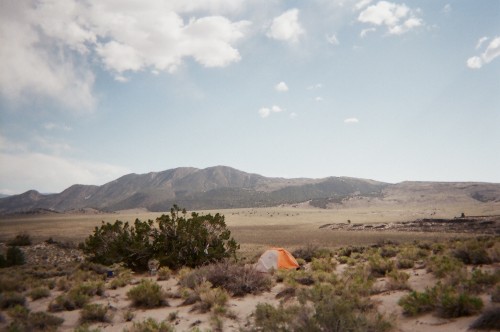Back to Teens
Back to Uncategorized
Get Outside
Two years ago, I trekked alone into the desert of Southeastern California and set up camp miles away from civilization. I stayed there for a week, isolated from technology and the comforts of modern living. I didn’t see another human for three days and nights.
I had just concluded my term as high school Student Body President and was graduating with honors, seemingly ready to take college and the real world by storm. But I felt empty inside, so exhausted by my full-speed push through high school that I feared I would enter Georgetown University in the fall as a hollow version of myself.
So I did something radical, signing up for my high school’s Vision Quest program to allow myself to reflect on where I had been, where I was going, and what was important to me. It was the most difficult week of my life, but spending time alone in the desert allowed me to reconnect my outer self with the inner energy that I had lost in the chaos of my day-to-day life.

Although the concept of a Vision Quest is rooted in Native American tradition, the role of nature as a space for self-exploration can be found in almost every spiritual and historical tradition. Christian monastics have retreated to the wilderness for hundreds of years, defining removal from urban civilization as a necessary condition for sanctity. Hinduism sees the wilderness as a separate sphere that balances the ordered world, one that should be embraced rather than shunned in the quest for wholeness. And the wilderness is central to my own Jewish tradition, too, in which the ancient Israelites wandered in the Sinai Desert for forty years before entering the Land of Canaan. (Almost like a communal forty-year Vision Quest. Sort of.)
But these traditions each speak to something fundamentally human about spending time in the natural world, and recent science is backing that something up. Last year, researchers at Stanford University monitored the brain activity of people walking through a park in comparison with people walking through an urban environment, and unsurprisingly found that the people walking through the park had noticeably lower blood flow to the parts of the brain associated with stress than their urban counterparts.
“If I had to give advice,” commented Gregory Bratman, an author of the study, “make time for yourself to interact with parks. Look at natural landscapes. It may help with stress.” What Bratman found was the same thing that Christian mystics found in the mountains of France a millennium ago and that I found in the desert of California two years ago: that spending time in nature is, simply, good for you.
So if it’s objectively good for us and it’s rooted in our traditions, why aren’t we doing more of it?
Because we’re busy. Perhaps that’s a sad statement about the priorities of our society, but if so then I’m guilty of the same sad prioritization; two years after my Vision Quest, I again find myself filling my schedule with classes and club meetings, living a life that is both phenomenally productive and phenomenally removed from the natural world. There is almost nowhere more distant from the desert of California than the streets of Georgetown.
But I’m going to try to do better. While I can’t simply escape to the desert again, I can take lots of small steps to reconnect with the outdoors. I can go on walks. I can meditate. I can stargaze. And I know that, with each step, I will more deeply root myself in the values and traditions that are so important to who I am. In the century-old words of the ever-wise John Muir, “thousands of tired, nerve-shaken, over-civilized people are beginning to find out going to the mountains is going home; that wilderness is a necessity.”
I’m making a commitment to get outside. Will you join me?
